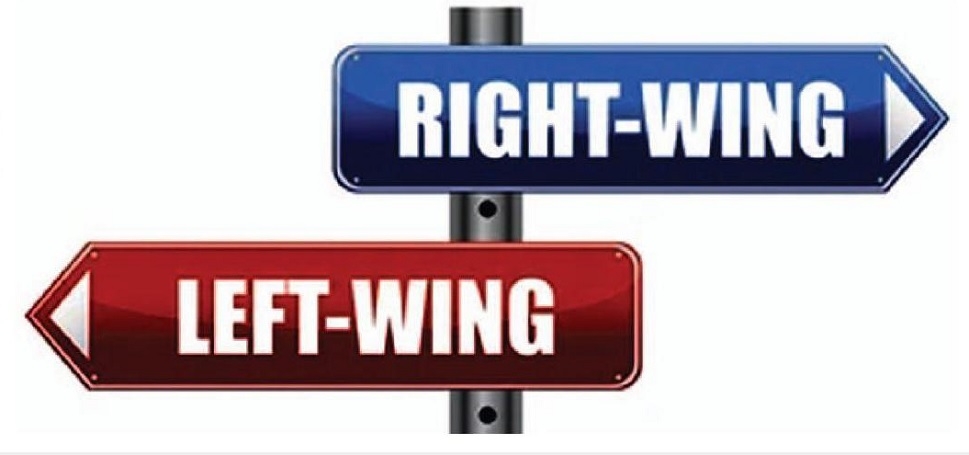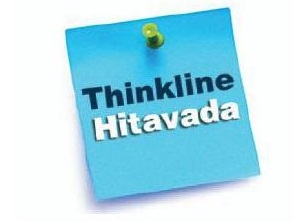LEFT, RIGHT:THE TWAIN QUESTION
| Date :19-Feb-2023 |

By KARTIK LOKHANDE :
“Left & Right: Will the twain ever meet?” T he topic of a panel discussion during the recently held Vidarbha Literary Festival2023, was a thought-provoking one indeed. It is another case that the panelists invested most of the time in dishing out ideas about ‘how’ part, and sharing own experiences, than on arriving at a conclusion whether the twain will ever meet. Since the topic of the discussion is different, let’s keep aside what happened at the panel discussion and carry on with the thought of Left and Right. First, given the Indian experience (barring the temporary phase of political collaboration against perceived common political rival), let’s have a clear answer – The twain will never meet. For, birth of any ideology is out of difference. So, how can the ideologies with different foundations ever meet in true sense of the term ‘meet’? Even if they happen to meet at some point in time, such meeting will be for temporary goals with convenience being the only motivation. There is another scenario, more philosophical in nature, to be discussed later on in the article. Having said that, there is an interesting question that comes to one’s mind: Who decides what is the Left and what is the Right? Not an easy question to answer. On the surface, one may say that antiestablishment block is the Left, and pronationalism block is the Right. But, it may not be correct. Let’s look at an interesting fact from the Central Intelligence Agency (CIA) files.

The document titled ‘The Indian Communist Party And The Sino-Soviet Dispute (Reference Title: ESAU XVI-62)’ dating back to February 1962 and approved for release (declassification) in May 2007, sheds light on the contemporary politics in India and also hints who was treated as the Right and the Left. One paragraph from that document makes an interesting read, “By January 1962, the Communist Party of India (CPI) had reached a point at which an open schism in the party in the coming year had become a serious possibility. The renewal of the Sino-Soviet conflict at the 22nd CPSU Congress had greatly worsened an already tense situation within the Indian party, and strengthened forces which for many years had been working toward a split in the CPI: the growth of unprecedented factionalism and indiscipline, the weakening of the authority of the party center at the hands of defiant provincial party committees, the slow decline in the authority of the CPSU for many reasons and the growth of Chinese party prestige in the eyes of many CPI members, and the steady polarization of leftist and rightist Indian party factions along pro-Chinese and pro-Soviet lines.” Obviously, around 1962, pro-Russia block constituted the Right and proChina block was the Left. But, these divisions were within the Marxism-inspired lines of thinking. In Indian context, thus, the Communists decided who was the Left and who was the Right on the basis of alignment with Marxist lines of thinking in foreign nations.
Given the evolution of the world so far, Chinese have proven to be hardcore ‘Party Nationalists’ whose every action is motivated by the interest of the authoritarian Chinese Communist Party (CCP). As has been pointed out by Vijay Gokhale, the former Ambassador of India to China, in case of China the Party interest is national interest. In that sense, China is an example of ‘Party Nationalism’. Still, it is the Global Left. However, the same flock that often sings praises to China and CCP principles, terms the anti-establishment block in India as the Left and pro-nationalism block as the Right. Given this fact, one wonders when did these originally Communist movement blocks extend to others, and why. Besides, who changed the application of these concepts in Indian context? Who decides who is the Left or the Right in what time-period and in what context? Is it the Americans, or the Russians, or the Chinese think-tanks, or the organisations that have stemmed from the Bretton Woods system, or the Harvard framework networks? Beyond this political dimension, there is philosophical dimension too.
In India, there are umpteen examples of how Leftists turned Rightists and vice-versa, and some individuals who dabbled in both the spheres from ideological point of view and having tried that turned to spirituality. In case of such individuals, the ideas of being the Left or the Right or being spiritually oriented represented the human intellectual characteristic of fluidity. Intellectualism or independent thinking may make one a Leftist within a Rightist organization or vice-versa on certain issues. Some switch from one political state to another only for the sake of convenience too. Whatever may be the reason, but if being the Left or the Right also is interchangeable at times, can we say that they actually ‘meet’? If yes, that meeting happens within each individual in different phases of life. One more dimension is, while discussing whether the Left or the Right will ever meet, most discussants emphasize on explaining how economy could make them meet. So, in their opinion, they suggest implicitly that all human activities are driven by economic or production relations, which is at the core of Communism as well as Capitalism across the globe. However, they tend to forget that not all human relations are governed by the principles of economy/production, irrespective of a lot of twisted theorizing around. For example, relations between a child and mother are above the economic/production relations.
They both care for each other and share a ‘bond’, which the emotions form the core of. In Indian context, country also is given that highest status equal to mother and is called ‘motherland’. The language spoken at home is ‘mothertongue’. So, whenever that noblest of all relations – mother-child – is referred to, the political, ideological, religious, casteist and other dividing lines do not work. Obviously, whether one is Leftist or Rightist, one keeps mother and everything connected to the emotion aroused by reference to that word ‘mother’, away from divisive agenda lines. These may just be some thoughts in the larger debate about the Left and the Right. There may be more dimensions. Whichever those dimensions may be, if one is serious about their application to Indian context, merely looking at those by using the frameworks and phrases and theory brackets developed by foreign powers is not going to serve the purpose. The meting of the twain, thus, will remain… a question!